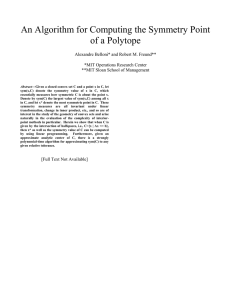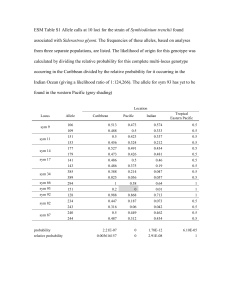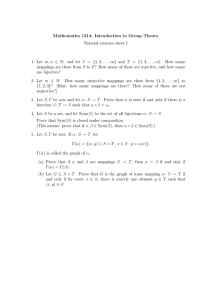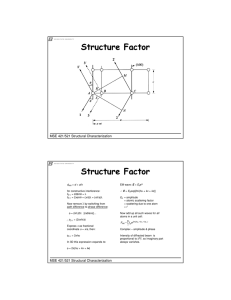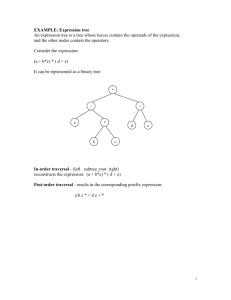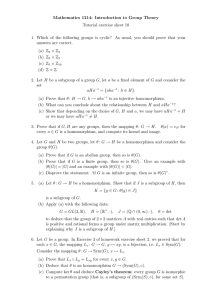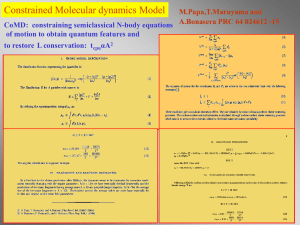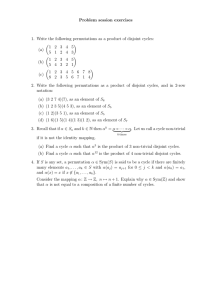Selected problem session solutions
advertisement
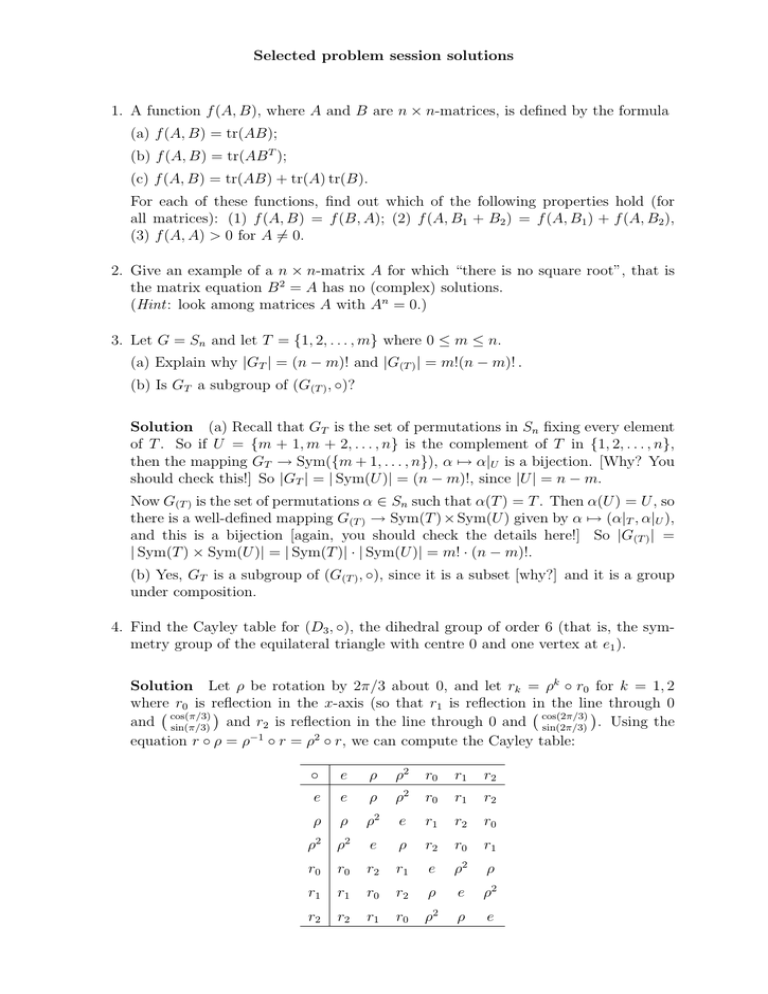
Selected problem session solutions
1. A function f (A, B), where A and B are n × n-matrices, is defined by the formula
(a) f (A, B) = tr(AB);
(b) f (A, B) = tr(AB T );
(c) f (A, B) = tr(AB) + tr(A) tr(B).
For each of these functions, find out which of the following properties hold (for
all matrices): (1) f (A, B) = f (B, A); (2) f (A, B1 + B2 ) = f (A, B1 ) + f (A, B2 ),
(3) f (A, A) > 0 for A 6= 0.
2. Give an example of a n × n-matrix A for which “there is no square root”, that is
the matrix equation B 2 = A has no (complex) solutions.
(Hint: look among matrices A with An = 0.)
3. Let G = Sn and let T = {1, 2, . . . , m} where 0 ≤ m ≤ n.
(a) Explain why |GT | = (n − m)! and |G(T ) | = m!(n − m)! .
(b) Is GT a subgroup of (G(T ) , ◦)?
Solution (a) Recall that GT is the set of permutations in Sn fixing every element
of T . So if U = {m + 1, m + 2, . . . , n} is the complement of T in {1, 2, . . . , n},
then the mapping GT → Sym({m + 1, . . . , n}), α 7→ α|U is a bijection. [Why? You
should check this!] So |GT | = | Sym(U )| = (n − m)!, since |U | = n − m.
Now G(T ) is the set of permutations α ∈ Sn such that α(T ) = T . Then α(U ) = U , so
there is a well-defined mapping G(T ) → Sym(T ) × Sym(U ) given by α 7→ (α|T , α|U ),
and this is a bijection [again, you should check the details here!] So |G(T ) | =
| Sym(T ) × Sym(U )| = | Sym(T )| · | Sym(U )| = m! · (n − m)!.
(b) Yes, GT is a subgroup of (G(T ) , ◦), since it is a subset [why?] and it is a group
under composition.
4. Find the Cayley table for (D3 , ◦), the dihedral group of order 6 (that is, the symmetry group of the equilateral triangle with centre 0 and one vertex at e1 ).
Solution Let ρ be rotation by 2π/3 about 0, and let rk = ρk ◦ r0 for k = 1, 2
where r0 is reflection in the x-axis (so that r1 is reflection in the line through 0
and cos(π/3)
and r2 is reflection in the line through 0 and cos(2π/3)
sin(π/3)
sin(2π/3) . Using the
equation r ◦ ρ = ρ−1 ◦ r = ρ2 ◦ r, we can compute the Cayley table:
◦
e
ρ
ρ2
r0
r1
r2
2
r0
r1
r2
e
e
ρ
ρ
ρ
ρ
ρ2
e
r1
r2
r0
ρ2
ρ2
e
ρ
r2
r0
r1
r0
r0
r2
r1
e
ρ2
ρ
r1
r1
r0
r2
ρ
e
ρ2
r2
r2
r1
r0
ρ2
ρ
e
